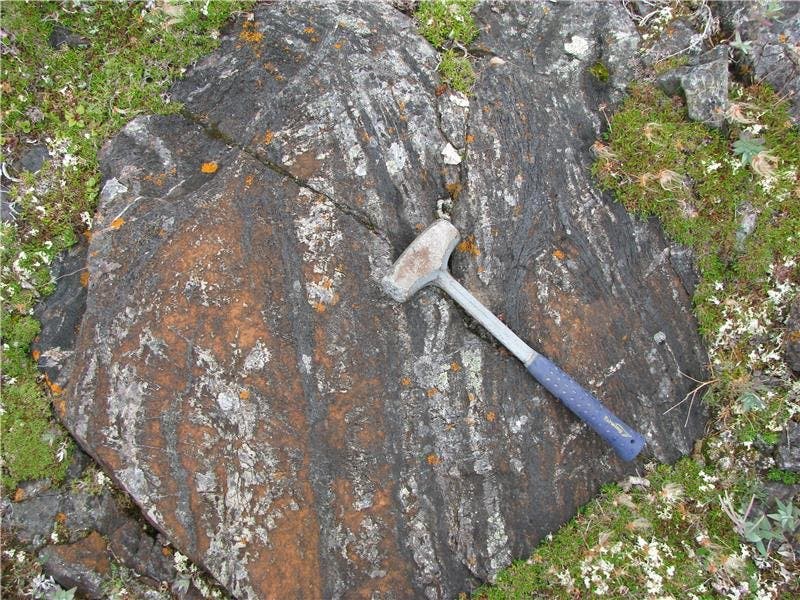Fossils of bugs who lived at least 3,770 million years ago have been discovered by an international team of researchers — becoming the oldest known life forms on Earth.

Image credits Dominic Papineau.
These fossils represent tiny tubes and filaments constructed by iron-metabolizing bacteria which were later encased in quartz layers in the Nuvvuagittuq Supracrustal Belt (NSB), Quebec, Canada. The sedimentary rocks in the NSB are some of the oldest known on Earth, and likely formed around an iron-rich deep-sea hydrothermal vent system. A vent which would unknowingly make history — because this vent cradled some of the first organisms on Earth between 3,770 and 4,300 million years ago, an international research team reports.
“Our discovery supports the idea that life emerged from hot, seafloor vents shortly after planet Earth formed. This speedy appearance of life on Earth fits with other evidence of recently discovered 3,700 million year old sedimentary mounds that were shaped by microorganisms,” explained PhD student Matthew Dodd from UCL Earth Sciences and the London Centre for Nanotechnology.
Dodd is the first author of a study which describes the fossils and the results of a subsequent analysis performed on then by the team from UCL, the Geological Survey of Norway, US Geological Survey, The University of Western Australia, the University of Ottawa and the University of Leeds.
They systematically looked at how the tubes and filaments of hematite — a mix of iron and oxygen — could have been produced by non-biological processes, such as temperature or pressure shifts in the rock following burial, but found all these possibilities highly unlikely.
On the other hand, the structures share a characteristic branching seen in the constructs of iron-oxidizing bacteria living near hydrothermal vents today. They were found in association with graphite and minerals like apatite and carbonates — which are found in biological matter including bones and teeth and are frequently associated with fossils. Lastly, the team also found that the fossils were inside spheroidal structures that usually contain fossils in younger rocks. This suggests that the hematite structures formed as the iron-fixing bacteria fossilized.
“We found the filaments and tubes inside centimetre-sized structures called concretions or nodules, as well as other tiny spheroidal structures, called rosettes and granules, all of which we think are the products of putrefaction. They are mineralogically identical to those in younger rocks from Norway, the Great Lakes area of North America and Western Australia,” explained study lead, Dr Dominic Papineau (UCL Earth Sciences and the London Centre for Nanotechnology).
“The structures are composed of the minerals expected to form from putrefaction, and have been well documented throughout the geological record, from the beginning until today. The fact we unearthed them from one of the oldest known rock formations, suggests we’ve found direct evidence of one of Earth’s oldest life forms.”
Papineau said that this discovery helps us to not only understand the history of life on Earth, but also to identify traces of life elsewhere in the universe. Dodd adds that as the findings prove life developed on Earth at a time when both it and Mars held liquid water on the surface, “posing exciting questions for extra-terrestrial life.” He says that the team expects we’ll eventually find evidence of past life on Mars from around 4,000 million years ago.
“If not, Earth may have been a special exception,” he concludes.
Prior to this discovery, the oldest microfossils reported were found in Western Australia and dated at 3,460 million years old but some scientists think they might be non-biological artifacts in the rocks. It was, therefore, a priority for the UCL-led team to determine whether the remains from Canada had biological origins.
The full paper “Evidence for early life in Earth’s oldest hydrothermal vent precipitates” has been published in the journal Nature.






